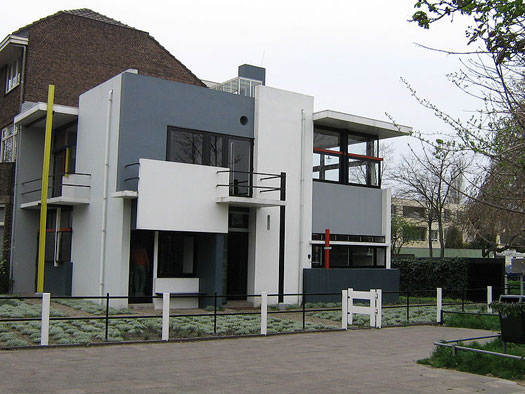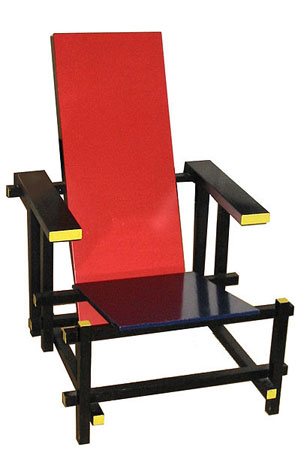
The Rietveld Schröder House—the only building realised completely according to the principles of De Stijl
We all know that art movements come and go; many are clearly pointless and awful (hello, Outer-Art?), some we’re just indifferent to (you know the ones), and then there are the movements that define a generation with their profundity. De Stijl (Dutch for style), without a shadow of a doubt, falls into the latter category.
In 1917, at a time in the post-World War I era when architects and designers were turning their backs on old forms and new and abstract ideas were coming into play, including the incorporation of inspiration from the emerging industrial era, a group of Dutch artists formed De Stijl. The key to De Stijl was creating art that scales down formal components – using only primary colors, plus black and white, and straight lines. The main intention in doing so was to express new artistic ideals of order and harmony by way of reduction to the absolute essentials. De Stijl was a reflection of the emerging trend of the 20th century – the joining of the art and design worlds – that had previously been separated since the Renaissance. The leader of the De Stijl movement was Theo van Doesburg, an eclectic and energetic Dutch painter and designer whose early work is often compared to Vincent Van Gogh’s. Widely considered today as one of the most daring artists of the avant-garde era, in hindsight it’s easy to see how his devotion to pure, abstract art led him to found De Stijl. Doesburg’s artist peers including Piet Mondrian, Vilmos Huszar and Gerrit Rietveld, followed in his footsteps, creating profound pieces that have stood the test of time and influenced subsequent movements in art, design, literature and music. In the modern era for example, Jack White, lead singer of the now defunct band White Stripes, has made it known that he is a huge fan of De Stijl art – so much so that he named the band’s second album after the movement.
You only need to check out Theo van Doesburg’s Arithmetische Compositie, Gerrit Rietveld’s Red and Blue Chair, or The Rietveld Schröder House — the only existing building that adheres to the principles of De Stijl – to see why the movement has been so influential.



